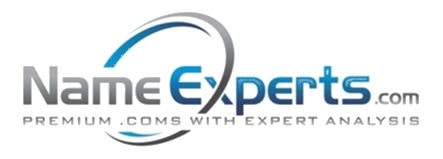Extensions, like .com or .net, are suffixes at the end of web addresses. Some of them have very specific uses, but .com will always be the preferred option. It is the most popular and well known, and provides a number of benefits over other gTLDs.
Using a Dot-Com Domain Makes the Most Sense
A .com domain name should be the foundation of your new brand. If you’re planning on starting a new business or have an idea that you’d like to monetize, the first thing you should do is register a .com domain with your preferred name.
With more than 1.5 billion domain names and only around 200 million of them active, there’s a huge chance that someone else has already registered the .com version of your site. If they haven’t, purchase the .com domain as soon as you’ve settled on a name. If they have, you could look for other top-level domains (TLDs), but they‘re not as popular as .com and you should still try to purchase that domain – even if it is already taken.
Benefits of Dot-Com Domains
Here’s why we think you need a .com domain and should go through the effort to get one:
.com Domains are Easily Recognizable
The .com domain was introduced as early as 1985 and was one of the first set of top-level domains introduced along with .net, .org and .edu. While the other TLDs were reserved primarily for nonprofit websites, .com was intended for commercial sites. By the time people knew about online ventures, .com became an established standard for websites. People looking up for your name on the internet often assume you have a dot-com domain.
.com Domains Come With SEO Benefits
.com domain names carry major brand appeal and credibility. A Ranking Factors study by Search Metrics found that websites using the .com extension rank better even when the keywords are generic. These websites are more common and hence look more authoritative.
.com Domains are More Reliable
Did you know that the link shortening service website bitly.com was initially bit.ly? When Libya cracked down on .ly websites because it was against Sharia Law, there was panic across users who thought all shortened links using .ly would break. Finally, Bitly moved to a .com extension because the .ly extension was considered risky. Using a .com domain means you’ll never have to worry about changing it or having issues with usage rights.
.com Domains Have a Higher Resale Value
Domain Investors should always focus on the generic .com. These assets hold value and increase in brand appeal.
Businesses with .com extensions look more professional than those using other extensions. Unless a domain name you’re looking for is taken, always stick to the much preferred and the more popular .com domain.
Dot-Com Domains vs Other gTLDs
What is a gTLD?
According to Wikipedia, Generic top–level domains (gTLDs) are one of the categories of top-level domains (TLDs) maintained by the Internet Assigned Numbers Authority (IANA) for use in the Domain Name System of the Internet. A top-level domain is the last label of every fully qualified domain name. They are called generic for historic reasons; initially, they were contrasted with country-specific TLDs in RFC 920.
To put it more into layman terms, gTLDs are all of the newer 1500 extensions that are being slowly added to the marketplace. Some of the new gTLDs include .wang, .top, .club, .law, .legal, .xyz, and many others. As gTLDs continue to be released, the value of the .com continues to fluctuate and change based on a client’s specific needs. There are many domain investors that have changed course and see sizable opportunities as they relate to domain investing and especially, the GTLD’S.
Is There an Advantage to Another gTLD Over Dot-Com?
Our belief is the gTLD is a solid alternative for your small to medium sized, local or regional-type business that sees the importance of a web presence, but doesn’t have the budget to go out and secure the .com. GTLD’s are a cost-effective alternative to a company or organization that needs the web footprint, but cannot devote a large sum of funds to a domain name purchase.
However, as a long term investment, the .com continues to drive the market.
What gTLDs Are Good Options?
Clients ask regularly if there are decent alternatives to the .com. There are many .org domains that hold lots of power and credibility. Specifically, the health space is one example of domains that hold significant upside and value. Sometimes, the .net is a decent alternative for clients that don’t have the budget to acquire a .com domain name.
Here are a list of some top extensions and how they’re often used:
- .info: informational sites
- .net: internet infrastructure sites, more technical
- .co: abbreviation for company, commerce, and community
- .org: non-commercial organizations and nonprofits
- .biz: e-commerce sites, business or commercial use
You definitely don’t need to build a website for every domain type. Make sure you forward any additional domain names you register to your primary site.
The Dot-Com Domain Should Be Your First Choice
When we talk about long term investing and ROI, we think about the stock market, commercial or residential real estate investing, gold bullion and Forex and certainly domain investing. There are hundreds of thousands of prime opportunities to invest in the domain space and as the last 25 years have shown, the .com is the most credible TLD in the market, both domestically and abroad. This holds true if you are buying your domain for your business or to hold and re-sell at a later date.
Companies work hard to protect their brands and marketing tactics. They invest millions of dollars and countless resources at building that beach front real estate and maintaining their presence in the world. As experts in the domain space, we continue to recommend the .com as the superior domain asset with considerable upside and long term equity potential.



